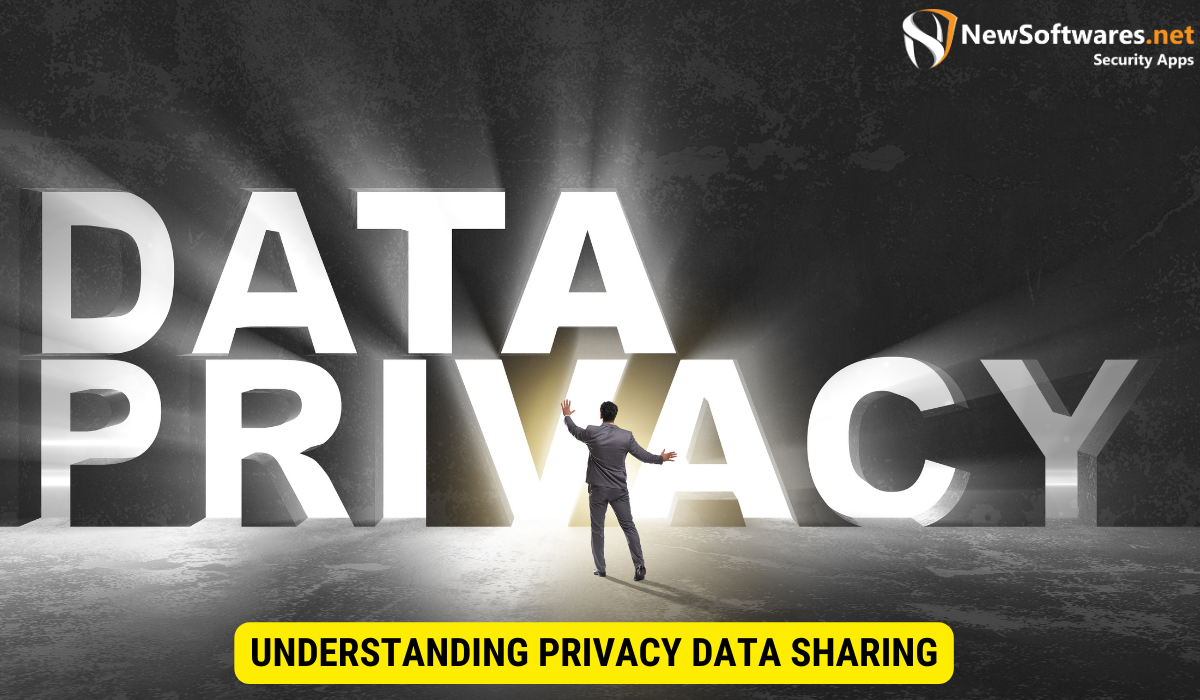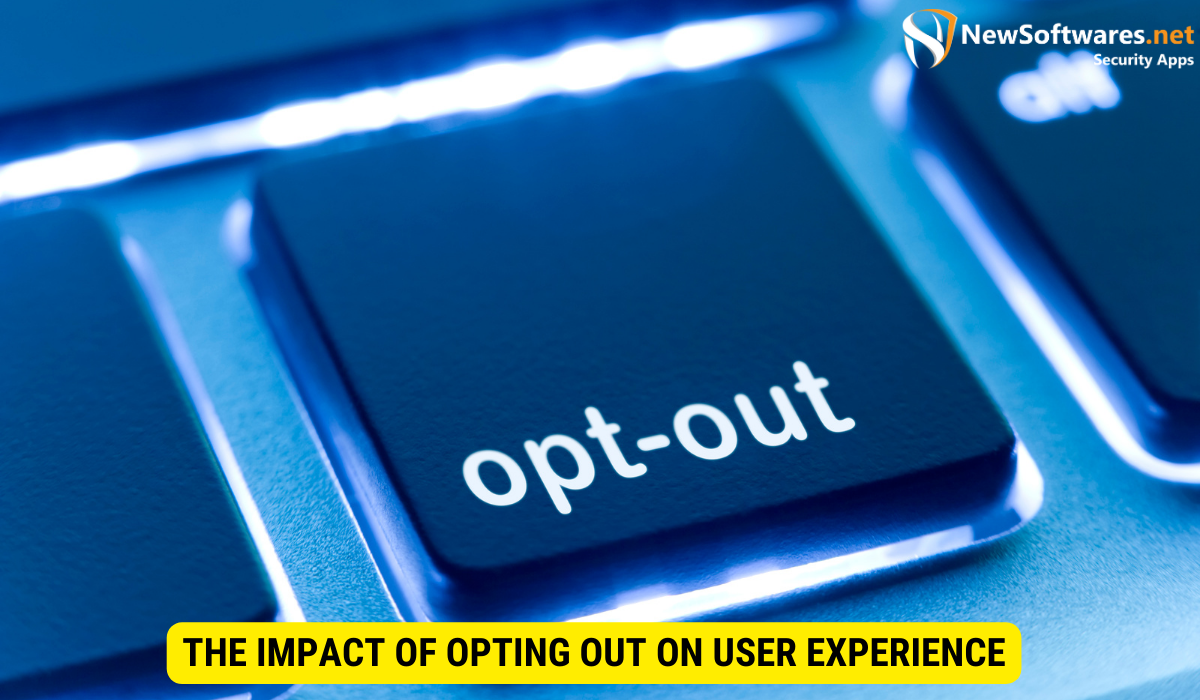Whether to opt out of privacy data sharing depends on your personal preferences and priorities. Opting out can enhance your privacy but may limit certain online experiences and services that rely on data sharing.
“Should I opt out of privacy data sharing?” is a question many individuals ask in today’s digital age. With concerns about data privacy and the potential risks associated with sharing personal information, it’s important to understand the ins and outs of privacy data sharing before deciding. Together, we will delve into the world of privacy data sharing, explore its pros and cons, and provide you with the necessary steps to opt-out if you choose to do so.
Understanding Privacy Data Sharing

Before diving into whether you should opt out of privacy data sharing, let’s first understand what privacy data sharing entails.
Privacy data sharing refers to sharing personal information, such as browsing history, online behavior, and demographic data, with third-party companies or service providers.
When you browse the internet, you leave behind a digital footprint. This footprint includes information about the websites you visit, the products you purchase, and the articles you read. Privacy data sharing takes advantage of this digital footprint by collecting and aggregating your personal information through various means.
What is Privacy Data Sharing?
Privacy data sharing refers to sharing personal information, such as browsing history, online behavior, and demographic data, with third-party companies or service providers.
Imagine this scenario: you visit an online clothing store and browse through their collection of dresses. You click on a few options, read the product descriptions, and even add a couple of dresses to your shopping cart. Unbeknownst to you, the website is tracking your every move. They collect data about the dresses you clicked on, the time you spent on each page, and even the color preferences you displayed.
This data is then packaged and sold to companies targeting consumers like you. These companies may be advertisers, market researchers, or even data brokers. They use the information to create targeted advertisements, tailor their marketing strategies, and gain insights into consumer behavior.
How Does Privacy Data Sharing Work?
Privacy data sharing works by collecting and aggregating your personal information through various means, such as cookies, website analytics, and tracking technologies. This collected data is then sold or shared with companies who use it for targeted advertising, market research, or other business purposes.
Let’s take a closer look at some of the methods used to collect your personal information:
Cookies: These are small text files stored on your computer when visiting a website. Cookies can track browsing behavior, remember preferences, and even store login information. Third-party cookies, in particular, track your activity across multiple websites, allowing companies to build a comprehensive profile of your online behavior.
Website Analytics: Many websites use analytics tools to track visitor behavior. These tools provide valuable insights into how users interact with a website, including the pages they visit, their time on each page, and their actions. This data is often collected and used to improve website performance and user experience, but it can also be shared with third parties.
Tracking Technologies: In addition to cookies and website analytics, other tracking technologies can be used to collect your personal information. These include pixel tags, web beacons, and device fingerprinting. These technologies work behind the scenes, gathering data about your device, browser, and online activities.
Once your personal information is collected, it is often sold or shared with companies interested in targeting specific audiences. These companies may use the data to deliver personalized advertisements, conduct market research, or enhance their products and services.
It is important to note that privacy data sharing is not always transparent. Many websites bury their data-sharing practices in lengthy privacy policies or use confusing language that makes it difficult for users to understand what is happening to their personal information.
Now that we better understand what privacy data sharing entails and how it works, we can explore the implications and considerations when deciding whether to opt out of this practice.
The Pros and Cons of Privacy Data Sharing
Now that we have a basic understanding of privacy data sharing, let’s evaluate its benefits and potential risks.
Privacy data sharing is a complex and controversial topic with advantages and disadvantages. This expanded discussion will delve deeper into the benefits and potential risks associated with privacy data sharing.
Benefits of Privacy Data Sharing
- Personalized Experiences: Privacy data sharing allows companies to tailor their products, services, and recommendations to suit your interests and preferences. Companies can gain insights into your behavior, preferences, and needs by analyzing your data. This can result in a more personalized and enjoyable user experience. For example, online shopping platforms can suggest products that align with your previous purchases or browsing history, saving you time and effort in finding what you need.
- Free Access to Content and Services: Many free online services and content platforms rely on data sharing to generate revenue. By opting in, you can enjoy access to these services without paying a fee. This model allows individuals who may not have the financial means to access certain resources to benefit from them. For instance, social media platforms offer free access to their platforms in exchange for data sharing, letting users to connect with friends and family, share their thoughts and experiences, and stay informed about current events.
- Enhanced Advertising Relevance: Data sharing enables targeted advertising, which means you are more likely to see advertisements that are relevant to your interests, making them potentially more useful to you. By analyzing your data, advertisers can deliver ads that align with your preferences, increasing the chances of finding products or services that interest you. This can save you from being bombarded with irrelevant ads and make your online experience more efficient and enjoyable.
Potential Risks of Privacy Data Sharing
- Data Breaches and Security Risks: When your personal data is shared or sold, there is always a risk of it falling into the wrong hands. Information breaches can lead to identity theft, fraud, and other security issues. Cybercriminals are continually evolving their techniques to exploit vulnerabilities in data systems, making it crucial for companies to prioritize robust security measures to protect user data. However, no system is entirely foolproof, and the risk of data breaches remains a concern.
- Lack of Control over Data Usage: Once your data is shared, you may have little control over how it is used or who has access to it. This lack of control raises concerns about privacy and the potential misuse of personal information. While companies may have privacy policies, it can be challenging for individuals to fully understand and monitor how their data is utilized. This lack of transparency can erode trust between individuals and companies, leading to skepticism and apprehension about data-sharing practices.
- Intrusive Targeted Advertising: While targeted advertising can be beneficial, it can also feel invasive and intrusive. Some individuals may prefer not to have their online behavior followed and used for advertising purposes. The constant presence of personalized ads can create a sense of being constantly monitored and can raise concerns about privacy invasion. Striking a balance between effective advertising and respecting individual privacy preferences is a challenge that companies and policymakers continue to grapple with.
In conclusion, privacy data sharing offers benefits such as personalized experiences, free access to content and services, and enhanced advertising relevance. However, it poses potential risks such as data breaches, lack of control over data usage, and intrusive targeted advertising. As technology advances, finding the right balance between reaping the benefits of data sharing and safeguarding individual privacy remains a crucial and ongoing discussion.
Evaluating Your Personal Privacy Needs
Now that you know the pros and cons, it’s important to evaluate your personal privacy needs to make an informed decision.
Assessing Your Comfort Level with Data Sharing
Consider how comfortable you are with sharing personal data. Are you okay with companies using your information to personalize their services, or does it make you uneasy?
Determining Your Data Privacy Priorities
Identify what aspects of data privacy are most important to you. Are security and control your top priorities, or do you value the benefits of personalized experiences?
Steps to Opt-Out of Privacy Data Sharing
If you have decided to opt out of privacy data sharing, here are the steps you can take:
Identifying Data-Sharing Settings
Start by reviewing the privacy and data-sharing settings on your platforms and services. Look for options to limit data collection and sharing.
Navigating the Opt-Out Process
Next, explore the opt-out options provided by companies and service providers. This may involve adjusting settings within your account or contacting customer support for further assistance.
The Impact of Opting Out on User Experience

It’s important to note that opting out of privacy data sharing may affect your user experience.
Changes in Service Functionality
Sometimes, opting out of data sharing may limit certain features or functionalities of your services. Be prepared for potential changes in the way these platforms operate.
Potential Limitations After Opting Out
Additionally, opting out may lead to less personalized experiences, as companies will no longer have access to your data to tailor their services to your preferences.
Key Takeaways
- Privacy data sharing involves the practice of sharing personal information with third-party companies.
- The benefits of privacy data sharing include personalized experiences, free access to content and services, and enhanced advertising relevance.
- Potential risks include data breaches, lack of control over data usage, and intrusive targeted advertising.
- Evaluate your comfort level with data sharing and determine your data privacy priorities before deciding.
- To opt-out, review and adjust data-sharing settings and navigate the opt-out process provided by companies and service providers.
- Opting out may impact certain features and functionalities of your services and result in less personalized experiences.
FAQs
Q: Is privacy data sharing always a bad thing?
A: Privacy data sharing has benefits like personalized experiences and access to free services. However, it also poses potential risks to your privacy and security.
Q: Can I selectively opt out of privacy data sharing?
A: Some platforms and services allow you to customize your data-sharing preferences. You may be able to opt out of specific data collection or sharing practices while still enjoying certain benefits.
Q: How can I stay safe online if I opt out of privacy data sharing?
A: Opting out of privacy data sharing is just one step towards enhancing your online privacy. It’s also important to regularly review your privacy settings, use strong and unique passwords, and be cautious of the information you share online.
Conclusion
In conclusion, whether you should opt out of privacy data sharing depends on your preferences and priorities. Consider the pros and cons, evaluate your comfort level, and take the necessary steps to protect your data privacy if you choose to do so. Balancing personalized experiences and privacy is key in today’s interconnected world.
